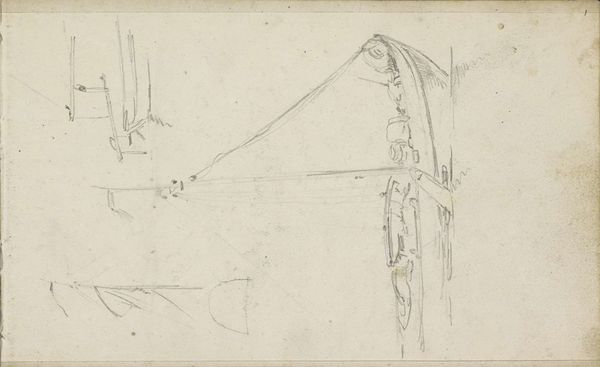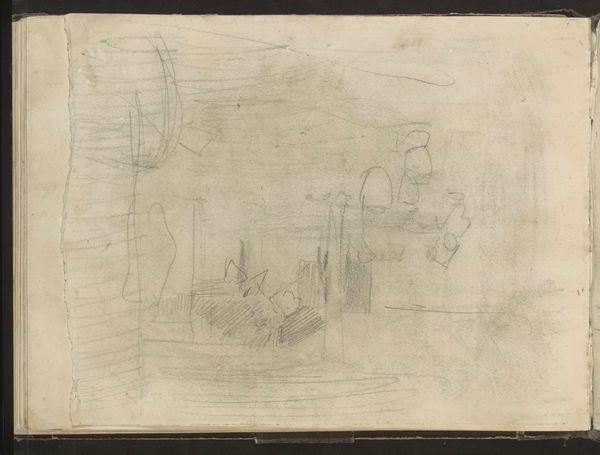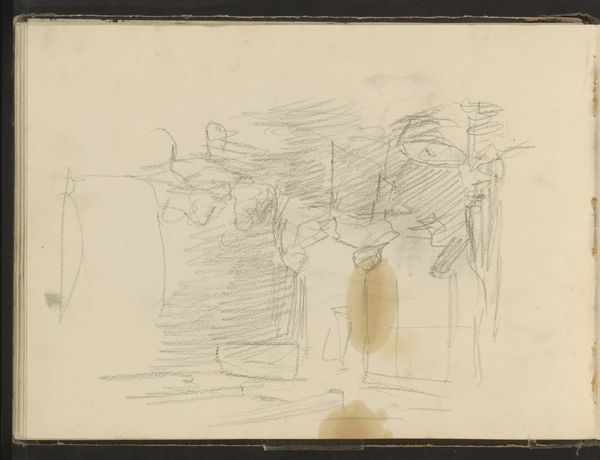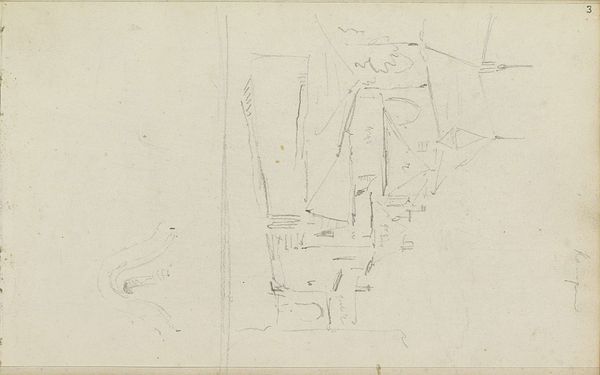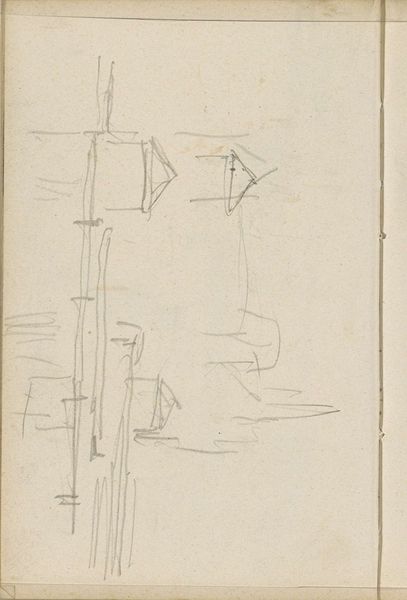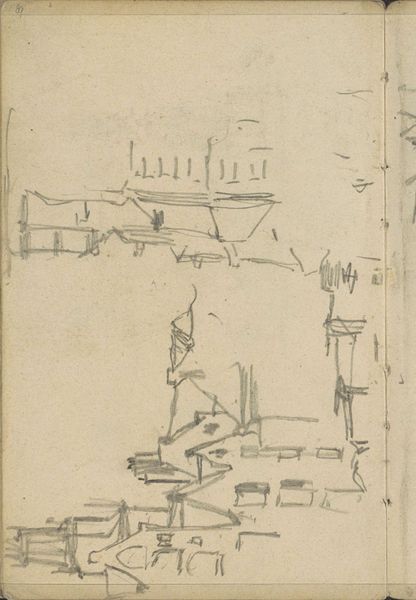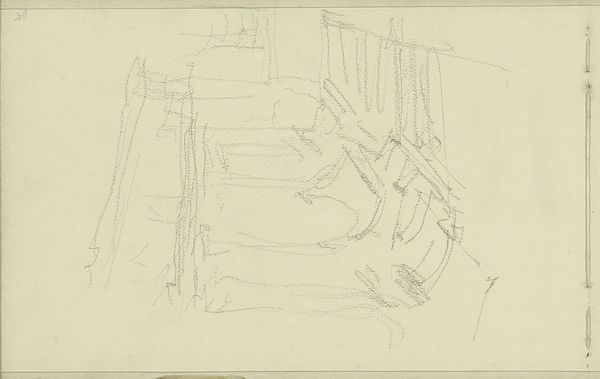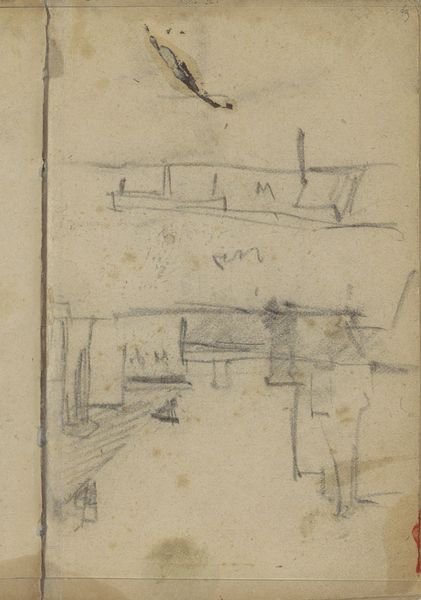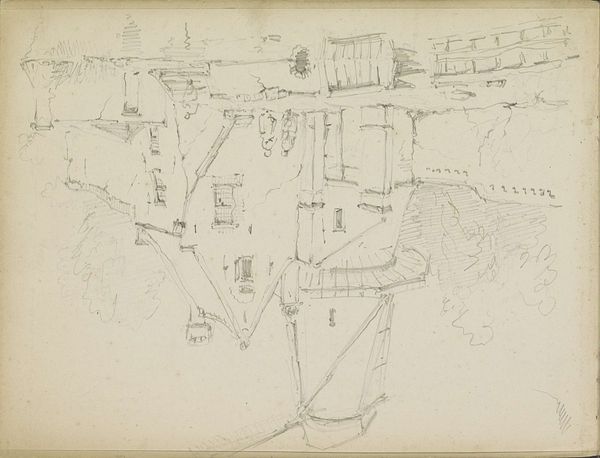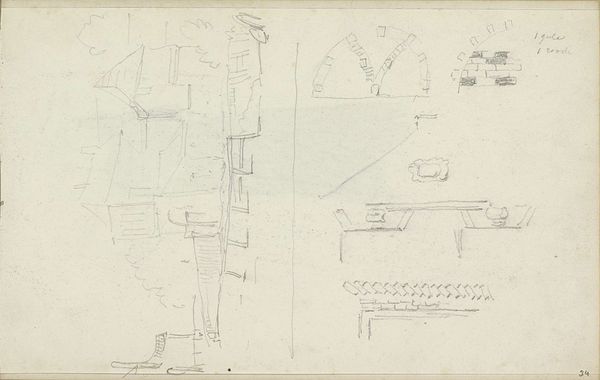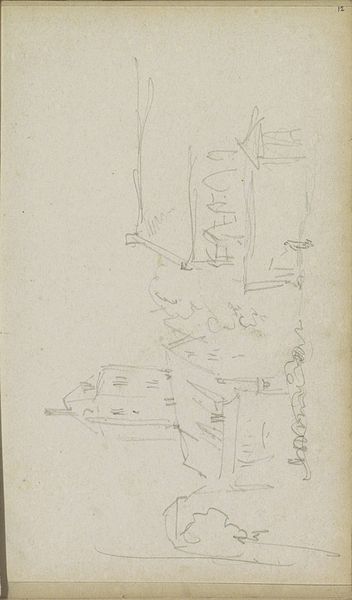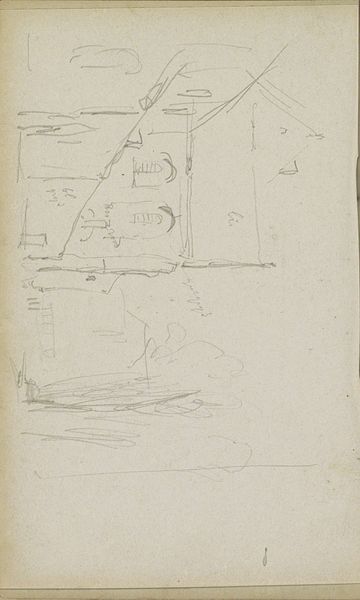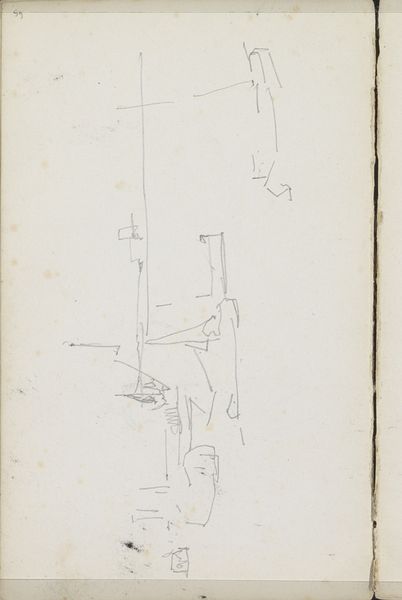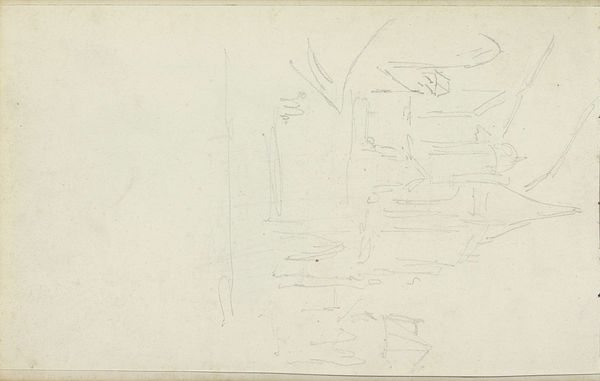
drawing, pencil
#
drawing
#
landscape
#
geometric
#
pencil
Copyright: Rijks Museum: Open Domain
Curator: Here we have a sketch from around 1869-1870 by Cornelis Springer, entitled "Construction with a Wheel, Possibly a Watermill". It resides here at the Rijksmuseum. Editor: The mood strikes me as rather fleeting and preliminary. It’s just the barest bones of a structure, really—a delicate arrangement of lines suggesting form more than actually defining it. What stands out to you in this skeletal depiction? Curator: The economic underpinnings are certainly suggested; we see this wheel, presumably part of a watermill, which itself indicates industry and labor within the context of 19th-century Netherlands. I wonder, what social narratives are present? Editor: Well, from a historical standpoint, it's interesting how the rapid sketchiness speaks to the changing function of art. In prior centuries, meticulous renderings were valued; now we see value even in the artist's immediate, unpolished impressions. What implications does this shift have for artistic labor? Curator: The act of drawing itself becomes highlighted, right? Pencil on paper—basic, accessible materials—allows for quick studies, a democratized approach to image-making that counters more formal commissioned pieces. Perhaps challenging older norms! Editor: I think also the very subject speaks to its potential social meaning—watermills served important functions in growing communities. There's that important interaction between rural, small communities and an emerging mechanized labor force—a perfect location to explore cultural evolution during this era! Curator: Indeed. Watermills were hubs of local commerce and technology. But it’s also worth noting how Springer emphasizes the underlying geometric structure—lines, circles—drawing attention to construction processes, almost a technical diagram disguised as a landscape sketch. What does this geometric abstraction then communicate? Editor: It reminds us that our perceptions are constructions, interpretations molded by societal narratives and historical forces. Art is so much more than aesthetic decoration! It has purpose! I find it beautiful! Curator: This exercise really underscored for me the value of interrogating not just what art depicts, but how it comes into being, through which materials and methods. It encourages awareness of economic, technological shifts. Editor: And for me, thinking about its historical context allows a glimpse into societal transformations! This artwork is simply captivating.
Comments
No comments
Be the first to comment and join the conversation on the ultimate creative platform.
